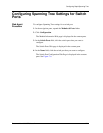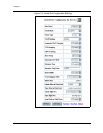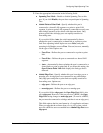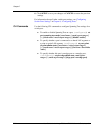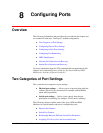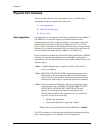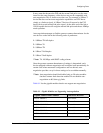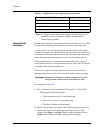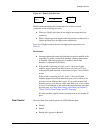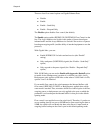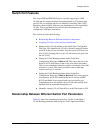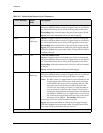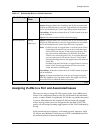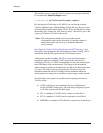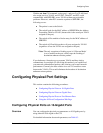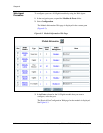
Document No. 10-300077, Issue 2 8-5
Configuring Ports
Figure 8-1. Remote fault detection
Enable remote fault detection on both ends of a switch-to-switch
connection, in the following two cases:
■ When two Gigabit ports that do not support auto-negotiation are
connected.
■ When a Gigabit port that supports auto-negotiation is connected to a
Gigabit port that does not support auto-negotiation.
For a list of Gigabit modules that do not support auto-negotiation, see
Table 8-1.
Restrictions:
■ Autonegotiation and remote fault detection cannot be enabled at the
same time. To enable remote fault detection, autonegotiation must
be disabled. When autonegotiation is enabled, remote fault
detection is automatically disabled.
■ If the switch is operating in Fabric mode 1, 80-series Gigabit
modules support remote fault detection on only one port. If you
enable remote fault detection on more than one port, a loss of traffic
occurs.
If the switch is operating in Fabric mode 2, 80-series Gigabit
modules support remote fault detection on two ports; however, the
ports must be on different fabric ports. If you enable remote fault
detection on two ports that are on the same fabric port, a loss of data
occurs. For information on the relationship between fabric ports and
physical ports, see “How Hunt Groups Load Share” in Chapter 6,
“Using VLANs, Hunt Groups, and VTP Snooping.”
50-series modules support remote fault detection on any number of
ports.
Flow Control There are three flow control options on 10/100 Ethernet ports:
■ Disable
■ Enable
■ Enable with Aggressive Backoff
Switch A,
Port 1
Switch B,
Port 2
TxRx
Tx Rx
X



